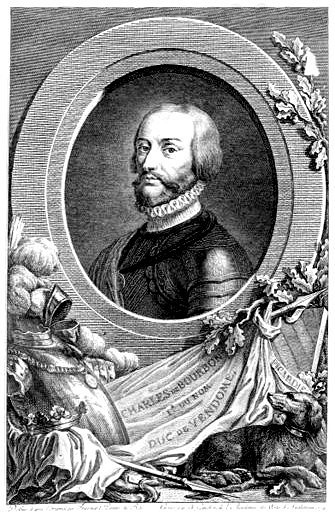 |
Charles, Duke Of Vendôme
Charles de Bourbon (2 June 1489 – 25 March 1537) was a French '' prince du sang'' and military commander at the court of Francis I of France. Biography Charles was born at the Château de Vendôme, eldest son of Francis de Bourbon, Count of Vendôme and Marie of Luxembourg. Charles succeeded his father as Count of Vendôme in 1495. Charles's first military service was in Italy, under King Louis XII of France. In 1514, he was created Duke of Vendôme when the county of Vendôme was elevated into a duchy. He fought at the Battle of Marignano (1515) and participated in the Flemish campaign. Because of his loyalty to the King, he was appointed head of the council when King Francis I was captured at the Battle of Pavia. Marriage and issue On 18 May 1513, Charles married Françoise d'Alençon, eldest daughter of René, Duke of Alençon and Margaret of Lorraine. They had: # Louis de Bourbon (1514–1516), died in infancy. # Marie de Bourbon (1515–1538), unmarried, prospec ... [...More Info...] [...Related Items...] OR: [Wikipedia] [Google] [Baidu] |
|
Duke Of Vendôme
Duke is a male title either of a monarch ruling over a duchy, or of a member of royalty, or nobility. As rulers, dukes are ranked below emperors, kings, grand princes, grand dukes, and sovereign princes. As royalty or nobility, they are ranked below princess nobility and grand dukes. The title comes from French ''duc'', itself from the Latin ''dux'', 'leader', a term used in republican Rome to refer to a military commander without an official rank (particularly one of Germanic or Celtic origin), and later coming to mean the leading military commander of a province. In most countries, the word ''duchess'' is the female equivalent. Following the reforms of the emperor Diocletian (which separated the civilian and military administrations of the Roman provinces), a ''dux'' became the military commander in each province. The title ''dux'', Hellenised to ''doux'', survived in the Eastern Roman Empire where it continued in several contexts, signifying a rank equivalent to a captain o ... [...More Info...] [...Related Items...] OR: [Wikipedia] [Google] [Baidu] |